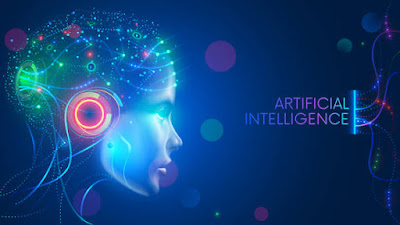Bayesian inference is a method of calculating the likelihood
of a proposition's validity based on a previous estimate of its likelihood plus
any new and relevant facts.
In the twentieth century, Bayes' Theorem, from which
Bayesian statistics are derived, was a prominent mathematical technique
employed in expert systems.
The Bayesian theorem has been used to issues such as robot
locomotion, weather forecasting, juri metry (the application of quantitative
approaches to legislation), phylogenetics (the evolutionary links among
animals), and pattern recognition in the twenty-first century.
It's also used in email spam filters and can be used to solve
the famous Monty Hall issue.
The mathematical theorem was derived by Reverend Thomas
Bayes (1702–1761) of England and published posthumously in the Philosophical
Transactions of the Royal Society of London in 1763 as "An Essay Towards
Solving a Problem in the Doctrine of Chances." Bayes' Theorem of Inverse
Probabilities is another name for it.
A classic article titled "Reasoning Foundations of
Medical Diagnosis," written by George Washington University electrical
engineer Robert Ledley and Rochester School of Medicine radiologist Lee Lusted
and published by Science in 1959, was the first notable discussion of Bayes'
Theorem as applied to the field of medical artificial intelligence.
Medical information in the mid-twentieth century was
frequently given as symptoms connected with an illness, rather than diseases
associated with a symptom, as Lusted subsequently recalled.
They came up with the notion of expressing medical knowledge
as the likelihood of a disease given the patient's symptoms using Bayesian
reasoning.
Bayesian statistics are conditional, allowing one to
determine the likelihood that a specific disease is present based on a specific
symptom, but only with prior knowledge of how frequently the disease and
symptom are correlated, as well as how frequently the symptom is present in the
absence of the disease.
It's pretty similar to what Alan Turing called the
evidence-based element in support of the hypothesis.
The symptom-disease complex, which involves several symptoms
in a patient, may also be resolved using Bayes' Theorem.
In computer-aided diagnosis, Bayesian statistics analyzes
the likelihood of each illness manifesting in a population with the chance of
each symptom manifesting given each disease to determine the probability of all
possible diseases given each patient's symptom-disease complex.
All induction, according to Bayes' Theorem, is statistical.
In 1960, the theory was used to generate the posterior
probability of certain illnesses for the first time.
In that year, University of Utah cardiologist Homer Warner,
Jr.
used Bayesian statistics to detect well-defined congenital
heart problems at Salt Lake's Latter-Day Saints Hospital, thanks to his access
to a Burroughs 205 digital computer.
The theory was used by Warner and his team to calculate the
chances that an undiscovered patient having identifiable symptoms, signs, or
laboratory data would fall into previously recognized illness categories.
As additional information became available, the computer
software could be employed again and again, creating or rating diagnoses via
serial observation.
The Burroughs computer outperformed any professional
cardiologist in applying Bayesian conditional-probability algorithms to a
symptom-disease matrix of thirty-five cardiac diseases, according to Warner.
John Overall, Clyde Williams, and Lawrence Fitzgerald for
thyroid problems; Charles Nugent for Cushing's illness; Gwilym Lodwick for
primary bone tumors; Martin Lipkin for hematological diseases; and Tim de
Dombal for acute abdominal discomfort were among the early supporters of
Bayesian estimation.
In the previous half-century, the Bayesian model has been
expanded and changed several times to account for or compensate for sequential
diagnosis and conditional independence, as well as to weight other elements.
Poor prediction of rare diseases, insufficient
discrimination between diseases with similar symptom complexes, inability to
quantify qualitative evidence, troubling conditional dependence between
evidence and hypotheses, and the enormous amount of manual labor required to
maintain the requisite joint probability distribution tables are all criticisms
leveled at Bayesian computer-aided diagnosis.
Outside of the populations for which they were intended,
Bayesian diagnostic helpers have been chastised for their shortcomings.
When rule-based decision support algorithms became more
prominent in the mid-1970s, the application of Bayesian statistics in
differential diagnosis reached a low.
In the 1980s, Bayesian approaches resurfaced and are now
extensively employed in the area of machine learning.
From the concept of Bayesian inference, artificial
intelligence researchers have developed robust techniques for supervised
learning, hidden Markov models, and mixed approaches for unsupervised learning.
Bayesian inference has been controversially utilized in
artificial intelligence algorithms that aim to calculate the conditional chance
of a crime being committed, to screen welfare recipients for drug use, and to
identify prospective mass shooters and terrorists in the real world.
The method has come under fire once again, especially when
screening includes infrequent or severe incidents, where the AI system might
act arbitrarily and flag too many people as being at danger of partaking in the
unwanted behavior.
In the United Kingdom, Bayesian inference has also been used
into the courtroom.
The defense team in Regina v.
Adams (1996) offered jurors the Bayesian approach to aid
them in forming an unbiased mechanism for combining introduced evidence, which
included a DNA profile and varying match probability calculations, as well as
constructing a personal threshold for convicting the accused "beyond a
reasonable doubt." Before Ledley, Lusted, and Warner revived Bayes'
theorem in the 1950s, it had previously been "rediscovered" multiple times.
Pierre-Simon Laplace, the Marquis de Condorcet, and George
Boole were among the historical figures who saw merit in the Bayesian approach
to probability.
The Monty Hall dilemma, named after the presenter of the
famous game show Let's Make a Deal, involves a contestant selecting whether to
continue with the door they've chosen or swap to another unopened door when
Monty Hall (who knows where the reward is) opens one to reveal a goat.
Switching doors, contrary to popular belief, doubles your
odds of winning under conditional probability.
~ Jai Krishna Ponnappan
You may also want to read more about Artificial Intelligence here.










